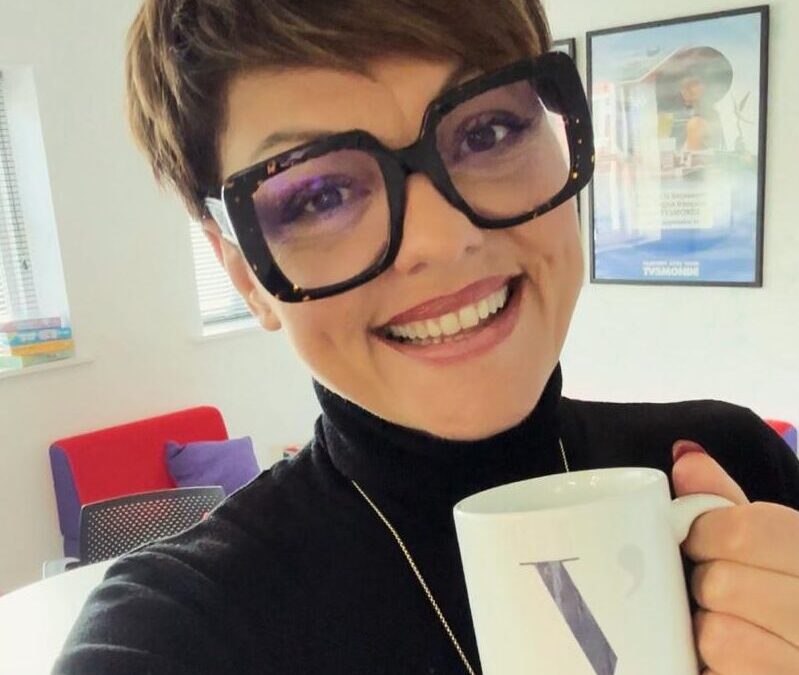“The discovery of blended learning marked a turning point”
As a seasoned language professional with over two decades in the industry, my personal struggle with mastering foreign languages mirrors the challenges faced by my students.
From the initial excitement of aspiring to fluency in English, German, and Spanish to grappling with setbacks and self-doubt, I intimately understand the frustrations and uncertainties that accompany the language learning journey.
There were moments when I questioned my legitimacy as a language trainer, contemplating whether I could authentically guide others if I hadn’t conquered multiple languages myself.
However, this internal struggle became a catalyst for empathy, allowing me to connect with students on a deeper level. It prompted a commitment to not just teach languages but to understand and empathise with the hurdles students face—whether it’s juggling work, family, or the budget constraints that often accompany language learning endeavours.
The discovery of blended learning marked a turning point, not only in reshaping my personal approach to language acquisition but also in bridging the gap between aspiration and accomplishment for my students.
This shared journey of setbacks and triumphs has become an invaluable asset, enabling me to navigate the intricate terrain of language learning alongside those who walk through my doors seeking linguistic proficiency.
I share more in this article, aiming to inspire understanding and offer practical guidance for those navigating their own path to language mastery.
The complex terrain of learning a foreign language
Navigating the complex terrain of learning a foreign language has been a paramount aspect of my 21-year journey in the language industry.
The universal desire to achieve fluency in languages like French, Spanish, Italian, German, or Chinese is something we’ve all encountered.
Yet, the dream often collides with the practicalities of life—work commitments, the demands of raising children, and financial constraints. This common struggle, the yearning for effective language communication, resonates deeply with anyone who has embarked on this linguistic journey.
The initial steps
We’ve all been there—the initial enthusiasm, attempting various language courses, experimenting with free language learning apps, hoping that daily engagement will miraculously lead to coherent conversations, perhaps even ordering a delightful lunch in Italy. However, reality sets in, and we find ourselves armed with a vocabulary but lacking the essential communication skills needed for meaningful interaction.
The cycle repeats—a fleeting commitment to one course, then another, a brief dalliance with free apps. There’s a realisation that mere exposure to words isn’t enough. Frustration sets in, leading many to enrol in quick evening courses, only to discover after three months that progress has been made, yet the destination remains elusive.
Each language learning journey shares a unique narrative of aspiration and setbacks
Among the countless language learners I’ve encountered over the years, each shares a unique narrative of aspiration and setbacks. My personal journey mirrors this quest, attempting to conquer English, then German, and subsequently Spanish. Failures have been part of the process, and I’ve faced moments of doubt, questioning whether I could legitimately offer advice as a professional language trainer without achieving fluency in multiple foreign languages.
It’s within this journey of uncertainty and self-reflection that the concept of blended learning emerged as a game-changer.
This transformative approach not only reshaped my learning methodology but also proved instrumental for my students.
The integration of various learning resources, combining traditional methods with modern technology, brought a newfound efficiency to the language learning process.
Blended learning: a game-changer
Blended learning became the bridge between aspiration and accomplishment, offering a personalised and adaptive approach that addressed the diverse needs of language learners.
In embracing blended learning, the trajectory of my linguistic journey and that of countless students shifted from a maze of frustration to a more strategic and fulfilling path. Blended learning became the compass guiding us through the intricate landscape of language acquisition, allowing for flexibility, individualisation, and a holistic understanding of language dynamics.
As a professional language trainer, this paradigm shift not only increased my own enthusiasm for learning but also empowered me to guide others on a more effective and rewarding language learning expedition.
Article written by Nathalie Danon

